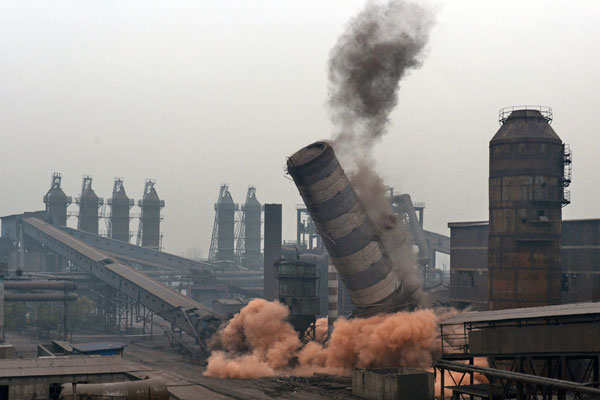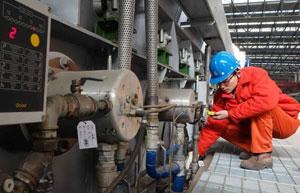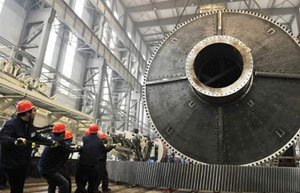Provinces up industrial output goals for 2014
By Zheng Yangpeng (China Daily) Updated: 2014-02-19 08:52
|
 |
|
An iron and steel plant in Tangshan, Hebei province, is demolishing its blast furnace in November, 2013, after being ordered by the provincial government to reduce the backward and polluting overcapacity industries. Li Shirao / Xinhua |
Local governments setting and announcing specific targets
Although the central government has cut the national industrial output growth target for this year, many provincial governments are raising theirs - and that's despite the fact that many fell short of their goals last year.
After the conclusion of provincial legislative sessions, which routinely produce general economic growth goals, local governments have begun to set and announce specific targets.
For industrial production, many are setting targets that exceed last year's actual growth, the 21st Century Business Herald reported on Tuesday.
The newspaper mentioned several provinces, including those in the central and western regions - Hubei, Jiangxi, Gansu and Shaanxi.
For example, Jiangxi recorded actual industrial output growth last year of 12.4 percent, while this year's target is 14 percent.
Industrial output in these provinces covers companies with at least 10 million yuan ($1.65 million) in annual revenue.
"This situation reflects local governments' persistent strong desire to develop their industrial sectors", said Zhou Weifu, a researcher at the Institute of Industrial Economics of the Chinese Academy of Social Sciences.
China's industrial sector is experiencing a chronic glut in capacity, which has prompted the central government to make reducing overcapacity as one of the key economic tasks for this year.
Surging borrowing costs also cast a shadow over many companies, because industrial enterprises will find it increasingly difficult to raise money and their profit may not be sufficient to cover the high -and rising - interest rate.
|
 |
 |
- NHTSA says finds no 'defect trend' in Tesla Model S sedans
- WTO rare earth ruling is unfair
- Amway says 2014 China sales may grow 8%
- President Xi in Europe: Forging deals, boosting business
- CNOOC releases 2013 sustainability report
- Local production by Chery Jaguar Land Rover this year
- Car lovers test their need for speed in BMW Mission 3
- China stocks close mixed Monday


















